Original author: nixo
原文翻译:TechFlow

概括
We surveyed independent operators (often broadly referred to as solo stakers) to better understand their profiles, demographics, pain points, and motivations. We noticed that while respondents were beginning to feel structurally disenfranchised and worried about the pressures of validator centralization, they still had high confidence in validators and resilience.
The purpose of this data is to provide the perspectives of a group of very privacy-conscious participants, in their own words, in order to accurately reflect their needs. This survey will be conducted annually and feedback on the question set is welcome.
method
Collection and distribution
Survey results were collected using LimeSurvey software. To ensure questions remain relevant to respondents, branching display logic was used. Cookies were used to prevent duplicate participation and CAPTCHA was used to prevent bot activity. The survey was open to the public and all responses were anonymous.
We solicited responses on EthStaker’s social channels (Reddit, Discord, Twitter, Farcaster), Obol’s Twitter account, and the public channels of the most popular Staking as a Service providers, hardware providers, and client software. The survey was also published on the Beaconcha.in website, Rhino Review , 和 the Week in Ethereum newsletter. The survey was conducted between April 8, 2024 and May 6, 2024.
analyze
Only data from completed surveys are used, incomplete surveys are discarded. Results are manually checked for bot activity, and complete questionnaires are not discarded. The data displayed in the pie chart is the result of single-choice answers. Multiple-choice answers are represented in the discussion with a star ✶ unicode ✶ character ✶.
Sampling bias
While the data suggests that people prefer home staking over more passive staking, this may be due to differences in participants and survey respondents. People who frequently participate in the staking community usually manage their own configurations. Those who do not manage their own configurations pay less attention because their validators usually do not require their immediate attention.
The information is more qualitative than quantitative because it relies on subjective data from a self-selected subset.
How widespread is this data?
Public node crawlers show that the number of Ethereum nodes is between 6,000 and 11,000. Not all of these nodes are validators. Many are operated by professional operators. This survey is only for stakers using their own funds, and the questions are not about professional operators. At the time of writing, the number of validators using Rocket Pool is estimated to be 1,832, which is the number of nodes with node ETH at the time of the staking snapshot minus the number of Allnodes nodes. This can be used as a lower bound on the number of independent operators. 868 of the 1,024 total responses were from stakers who claimed to control their own node configuration, so we estimate that approximately 8% to 47% of node operators participated in this survey, but both ends of this range are unlikely. Note that this percentage includes all node operators, including professional operators. This survey focuses on non-professional operators.
While it is easy to see the number of validators on the network, there is currently no way to accurately count the number of validating nodes, independent operators, or network nodes (this is more of a feature than a bug). Node operators can self-identify their validators, but most independent operators and many professional operators do not do so.
result
The original data can be found 这里 .
Respondent Profile
-
32% are Genesis stakers.
-
80% are home stakers, and another 4% are a combination of home and remote staking.
-
84% do not hold significant funds in liquid tokens.
-
85% did not change their primary staking method.
-
77% of people have staked 66% – 100% of ETH.
-
30% use smoothing pools, 61% do not use smoothing pools, and 9% are unfamiliar with the concept or are unaware of the options available to them.
-
95% use Linux to run the validator ✶.
-
51% did not use staking software to set up a validator. 27% used Rocket Pool , 15% DAppNode , and 10% Eth Docker (“did not use staking software” generally means they followed the guide and used systemd ) ✶
-
85% of people have not changed their staking method since the beginning.
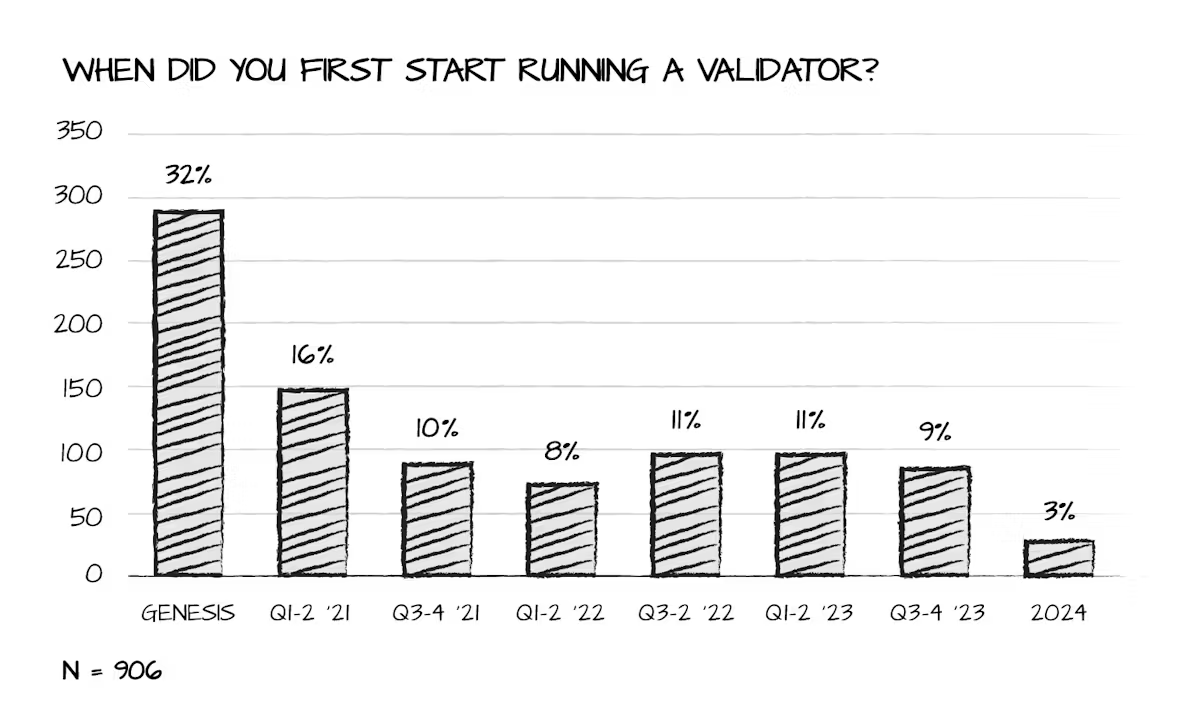
Figure 1: When did you start running the validator?
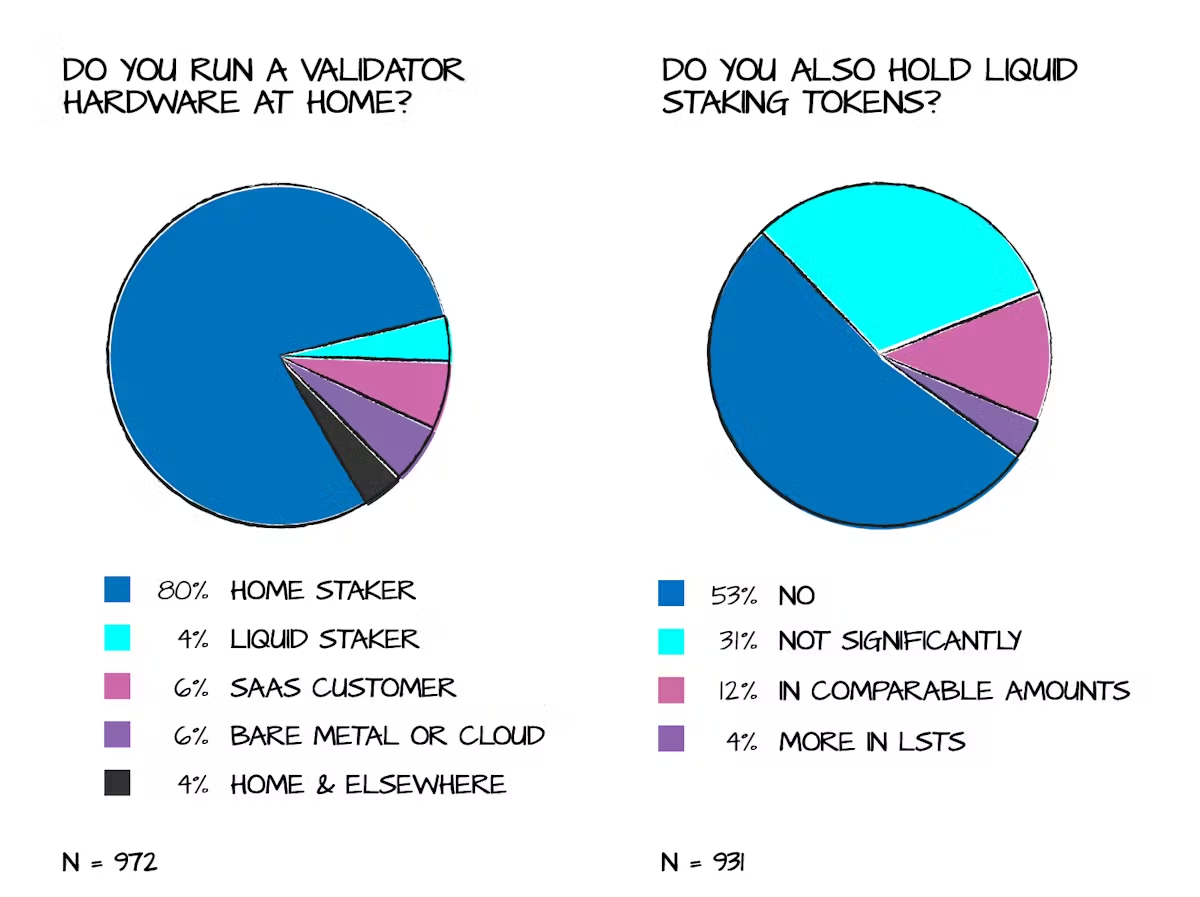
Figure 2: Where do you stake? Do you hold LST?

Figure 3: Have you changed your staking method and how much ETH you have staked?
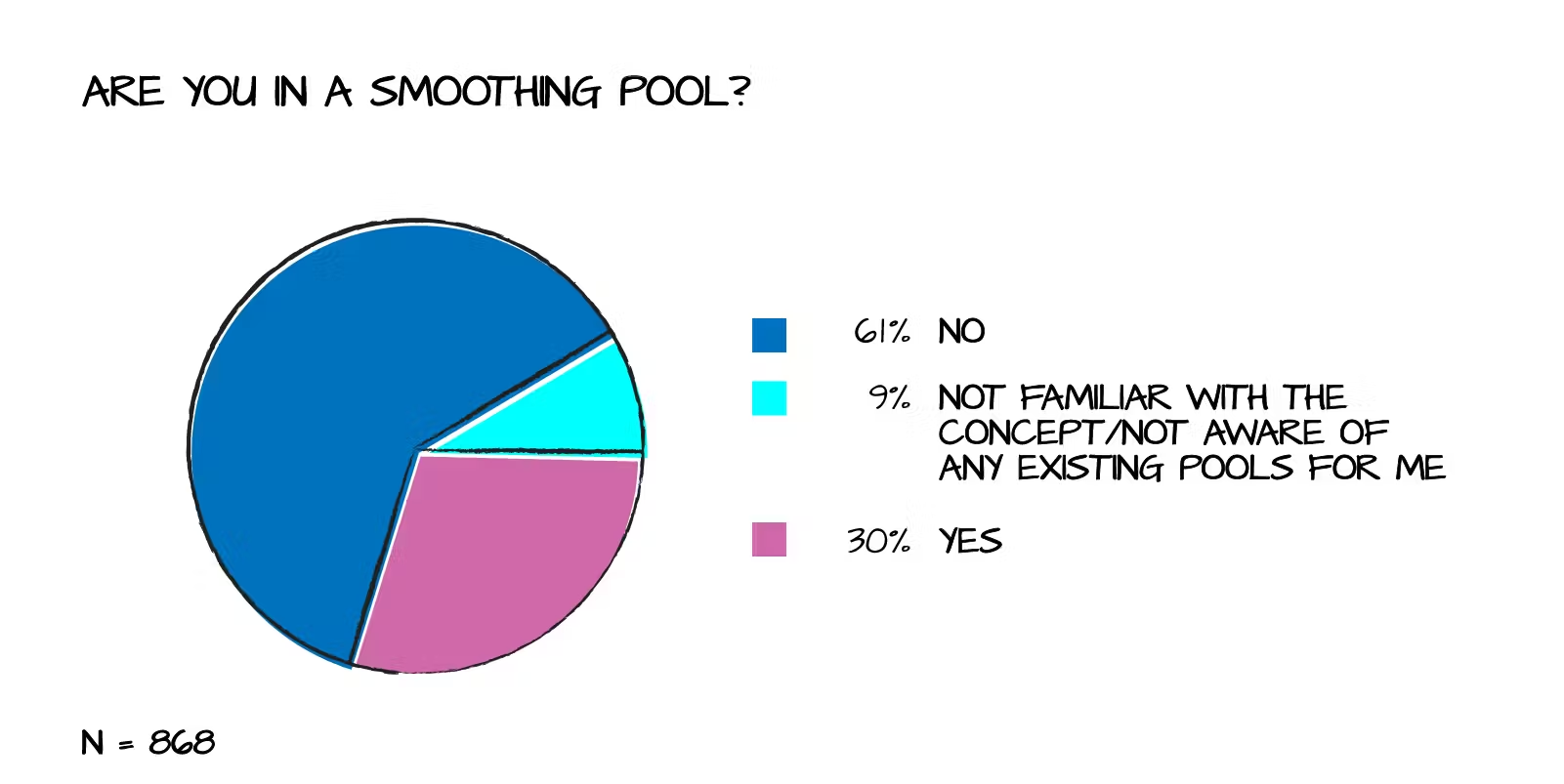
Figure 4: Are you in a smooth pool?
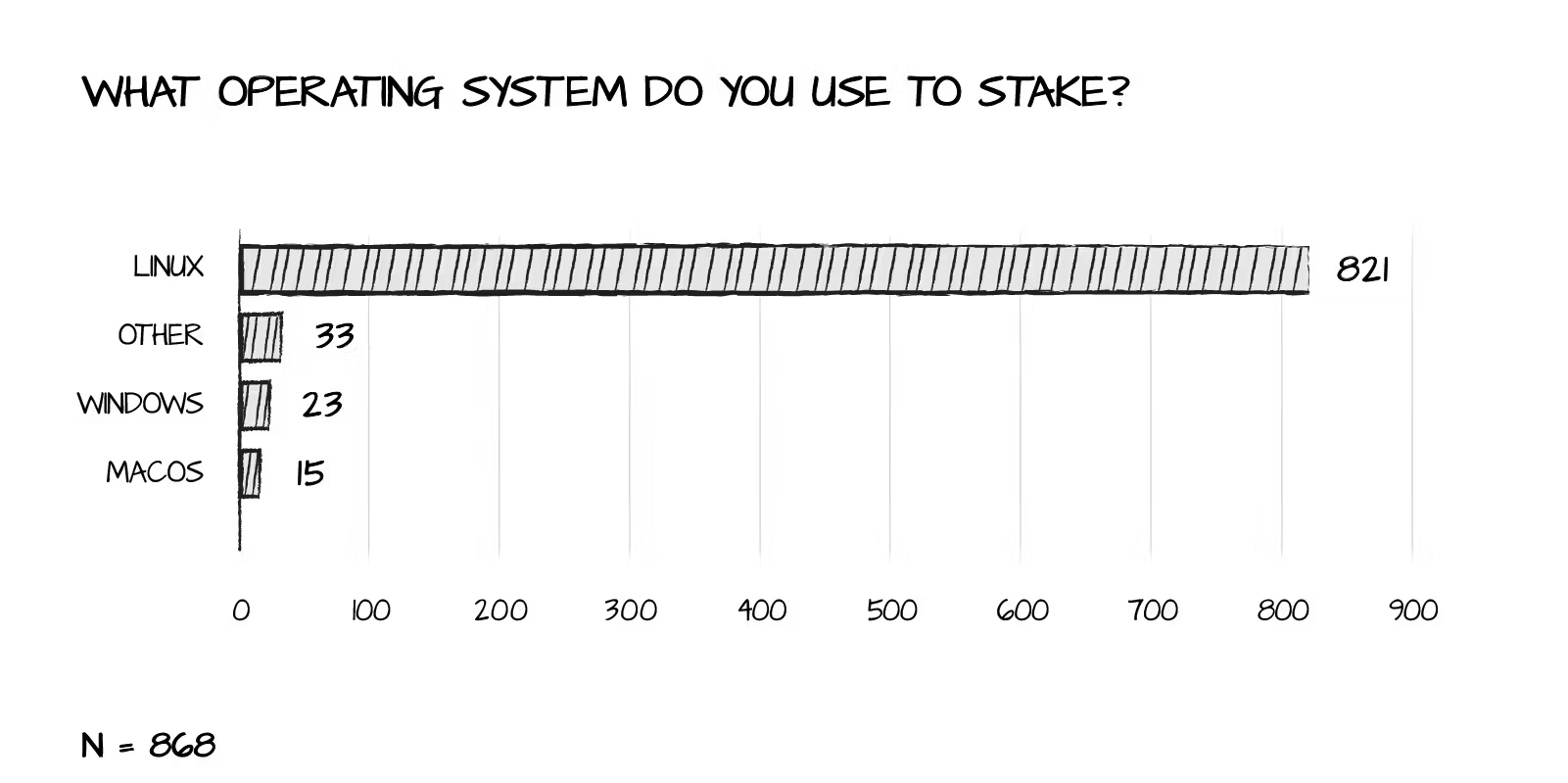
Figure 5: What operating system do you use for staking?

Figure 6: Have you used software to help you stake?
Main focus
-
Key concerns include overwhelming customer risk, suboptimal tax structures for staking, hardware issues, and key management ✶.
-
69% do not track their bandwidth, and 78% are unsure if bandwidth has increased since Dencun.
-
Respondents spend an average of 3.4 hours per month (median 2 hours) maintaining their setups. Removing the single outlier data point (x = 155 hours) with a z-score of 22, the average monthly maintenance time is 3.2 hours.
-
On a scale of 1-10, with 10 representing the greatest risk the network could face, voters rated supermajority risk at 7.4 and stake centralization risk at 7.2 (the ratings have been adjusted for clarity).
-
When asked what percentage of ETH they expected to stake in 2-3 years, the answers (n=1003) averaged 49.4% ETH.
-
When asked what percentage of ETH staked they suspected was operated by independent operators like themselves, the answers (n=924) averaged 15.9% of ETH staked.

Figure 7: What practical issues are you most concerned about?
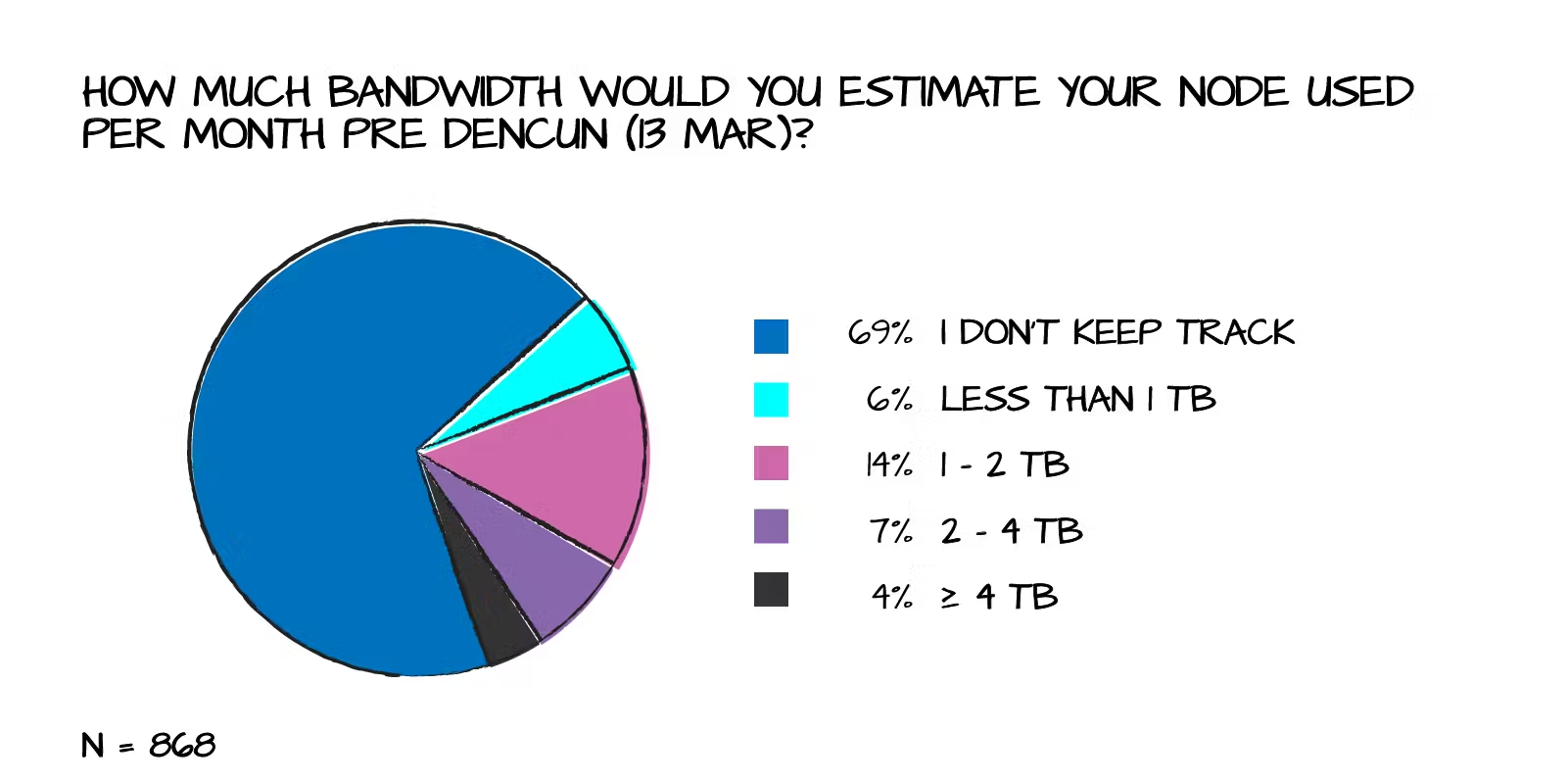
Figure 8: How much bandwidth does your node use?
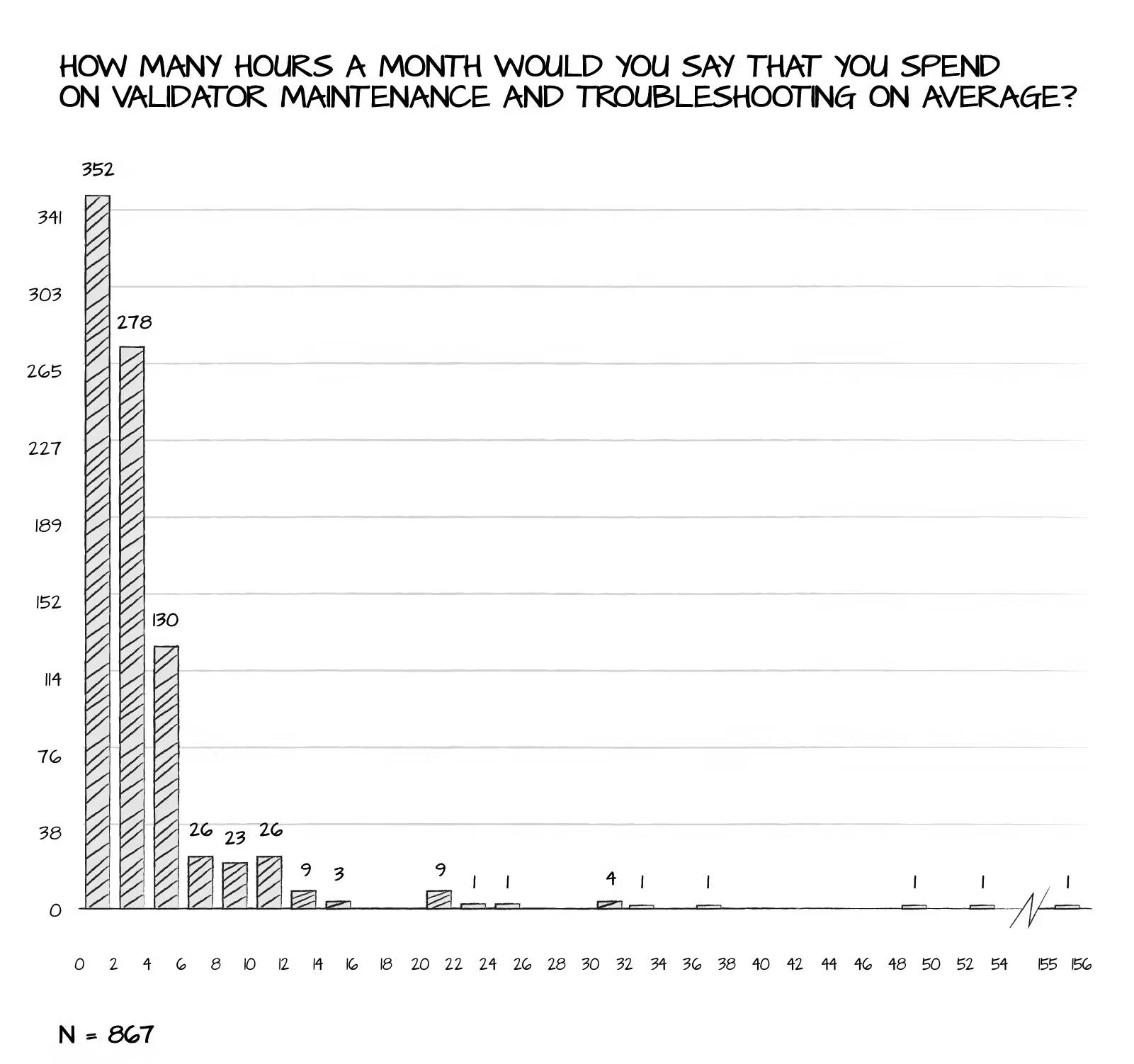
Figure 9: How many hours do you spend on maintenance each month?
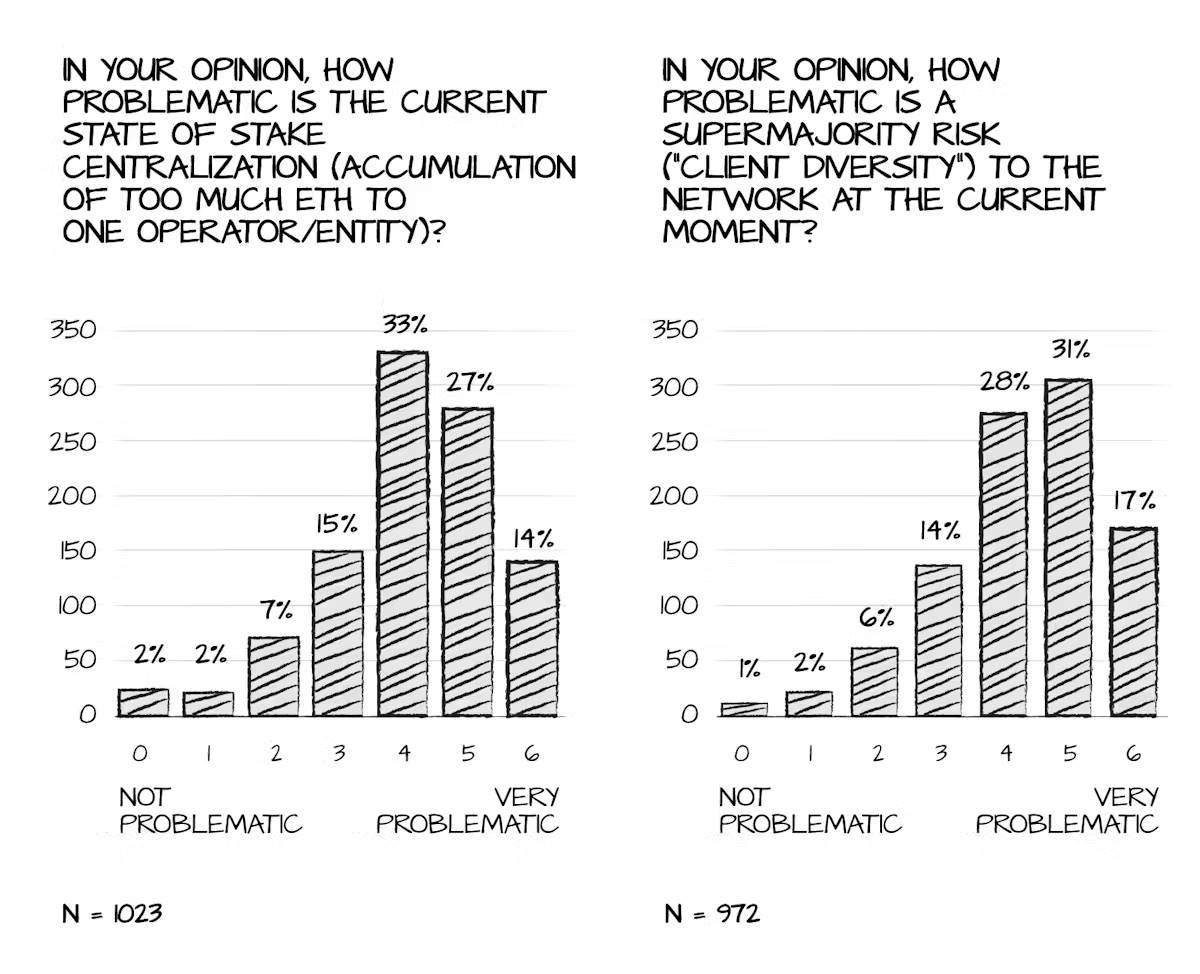
Figure 10: Risks facing the network
Perceived value and representativeness
-
89% believe independent stakers are just as or more important to the network now than when they first started staking (11% believe they are less important).
-
66% believe that individual voters today gain more or the same amount of value from participating in consensus voting than when they first started voting (34% believe they gain less value).
-
When asked how well they felt their interests were represented in ongoing research and protocol development, the mean score was 5.8 out of 10, with 10 being very well represented and 1 being not represented at all (the scale was adjusted for clarity).
-
50% believe that protocol research either ignores solo stakers or is largely powerless to help solo stakers against monetary interests (19% say they are not concerned).
-
92% support or are neutral on the statement that the issuance curve needs to change to better incentivize decentralized staking (regardless of existing proposals).

Figure 11: Value of individual stakes

Figure 12: Distribution and representation in research
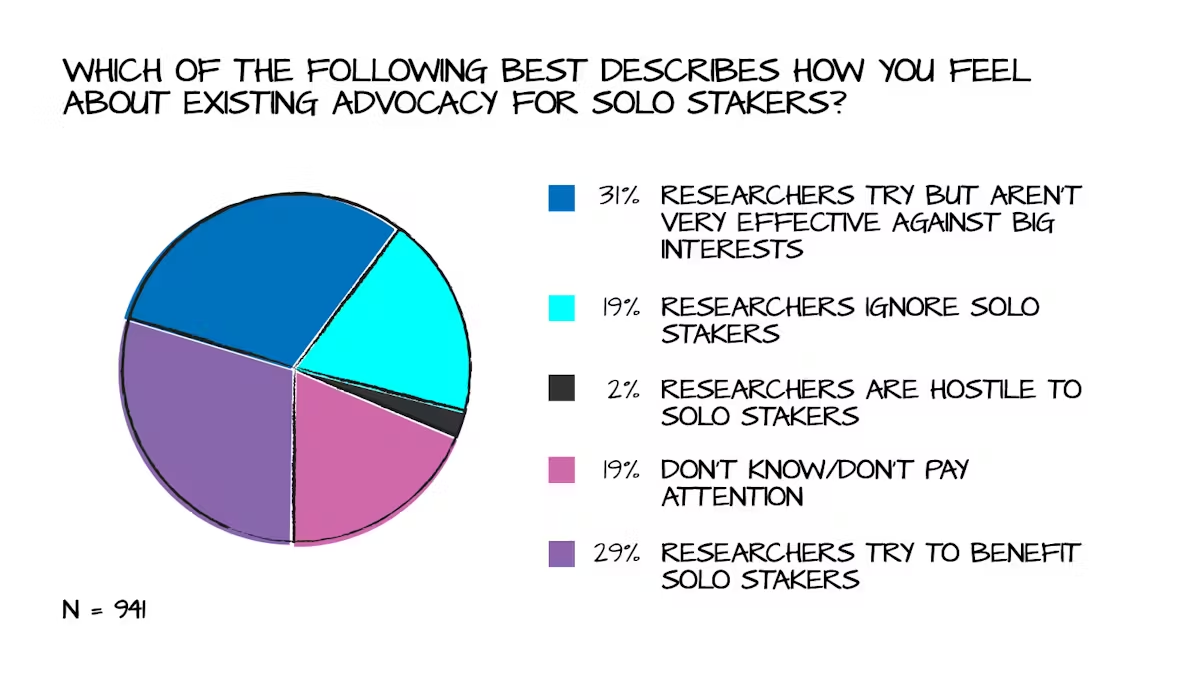
Figure 13: Advertising for Solo Stakers
Stay Engaged
-
Supporting the Ethereum protocol (84%) was the primary motivation for initial staking, followed by yield (81%) ✶.
-
65% plan to continue increasing the staked share.
-
35% plan to continue increasing their staked shares, but plan to stop adding new stakes after certain external conditions are met.
-
31% do not plan to add new stakes.
-
62% said they had no plans to exit staking✶.

Figure 14: Do you plan to add new stakes?
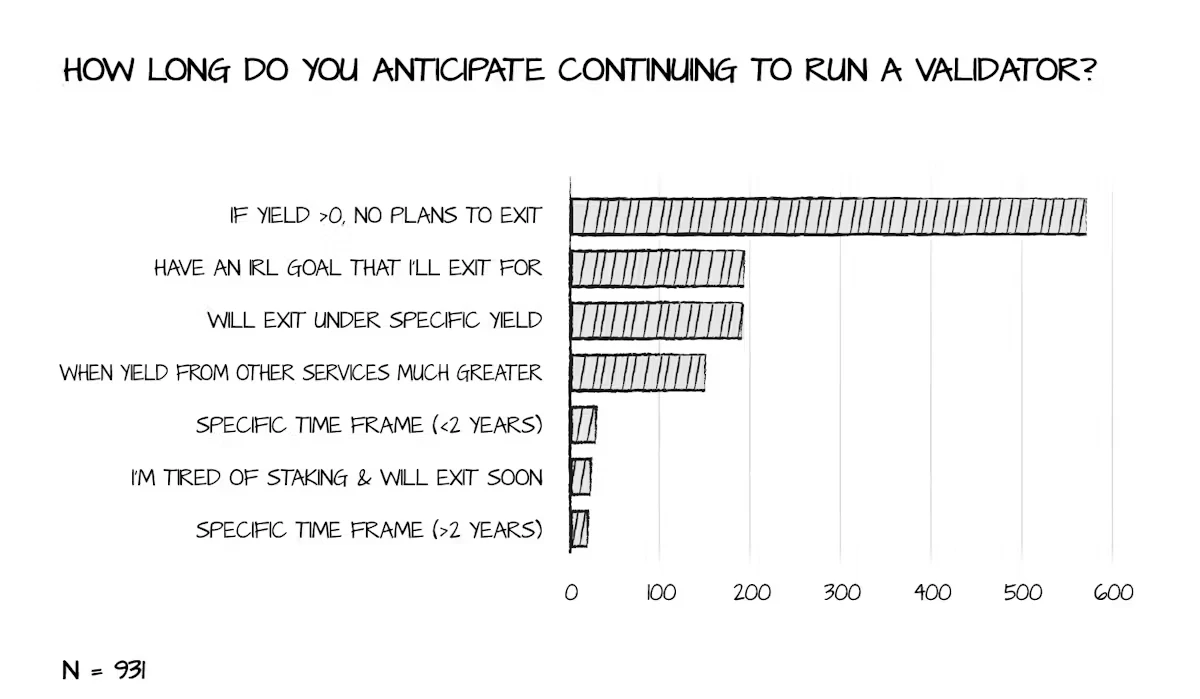
Figure 15: How long do you expect the validator to continue running?
Where do stakers learn?
-
69% use technical guides as their primary source of learning (e.g. websites , CoinCashew , Rocket Pool docs , client documentation ) ✶.
-
63% use EthStaker as their primary source of learning ✶.
-
53% use ethereum.org as their primary source for learning ✶
-
The most common sources reported for learning about necessary updates and protocol research (these two issues seem to be confused with each other, so we will discuss them together) are Discord, explorer notification services, Twitter and Reddit, ethresear.ch , and podcasts, with a significant number of people specifically mentioning the daily Gwei ✶.

Figure 16: From which channels did you learn about staking?
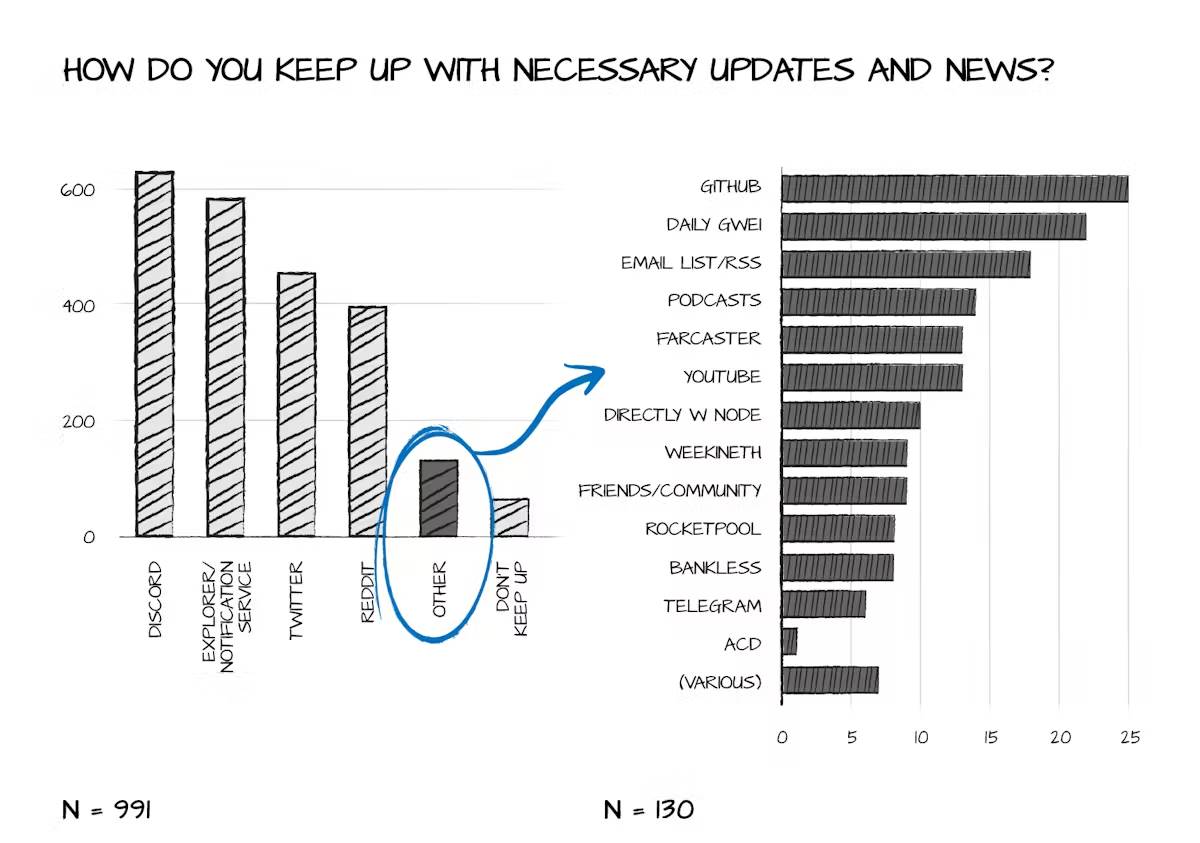
Figure 17: Which channels do you use to learn about the latest information and news?
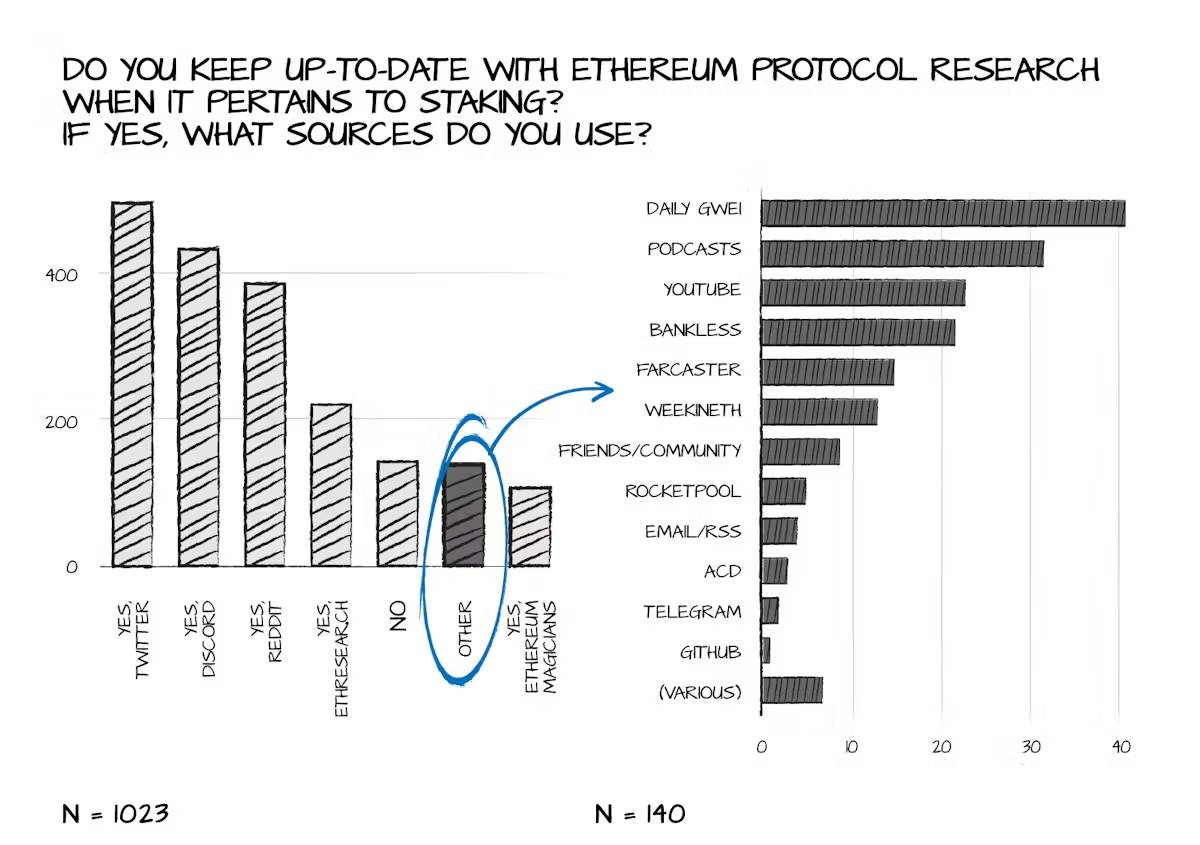
Figure 18: Through which channels do you learn about the latest progress in protocol research?
Open Questions: Unresolved Concerns
At the end of the survey, voters had the opportunity to comment on what they felt was not adequately covered in the survey. The full answers are available in the raw data , but here is a summary of the AI-assisted answers:
n = 204
-
Decentralization and Centralization Risks (n=68): Many respondents were concerned about the centralizing effects of the current protocol development and the underrepresentation of individual stakers. LST was seen as a centralizing force that would reduce the attractiveness and feasibility of running independent nodes, while re-staking was a potential vector for centralization.
-
User experience, technical barriers, hardware (n=46): There were many requests to simplify the staking process to make it more accessible to non-technical users. Concerns about bandwidth, the need for IPv6 support, and the need for estate planning solutions were also mentioned.
-
Issuance curve adjustments (n=38): There was considerable concern about the impact of changing the issuance curve, particularly the impact it might have on independent operators, but some support for the research direction was also expressed. Many believed that the decline in yields would lead to conditions that would only benefit large, centralized pricing entities.
-
Economic and Tax Impact (n=28): Tax policy is a significant burden for individual stakers, making staking less economically viable than holding Liquid Staking Tokens (LSTs), which have more favorable tax treatment.
-
MEV (n=24): Stakers are split on the use of MEVboost, with some choosing not to enable it due to ethical concerns. These respondents advocated for alternative solutions and further research to address the issues posed by MEV. MEV is seen as a tool that has the potential to enable protocol capture by large central entities. Respondents called for stronger measures to prevent MEV from undermining the decentralized nature of Ethereum.
-
Privacy concerns (n = 15): Stakers are concerned that details of their operations (such as IP addresses and transaction content) will be exposed, compromising their privacy and security. Respondents hope to develop and integrate privacy-preserving technologies. Respondents noted that the lack of privacy has forced some token owners to censor transactions, compromising the neutrality and inclusiveness of the network.
人口统计
-
95% identified themselves as male.
-
90% consider themselves to be somewhat or very much technical.
-
74% do not work in crypto.
-
88% of stakes come from North America, Europe, or Australia.
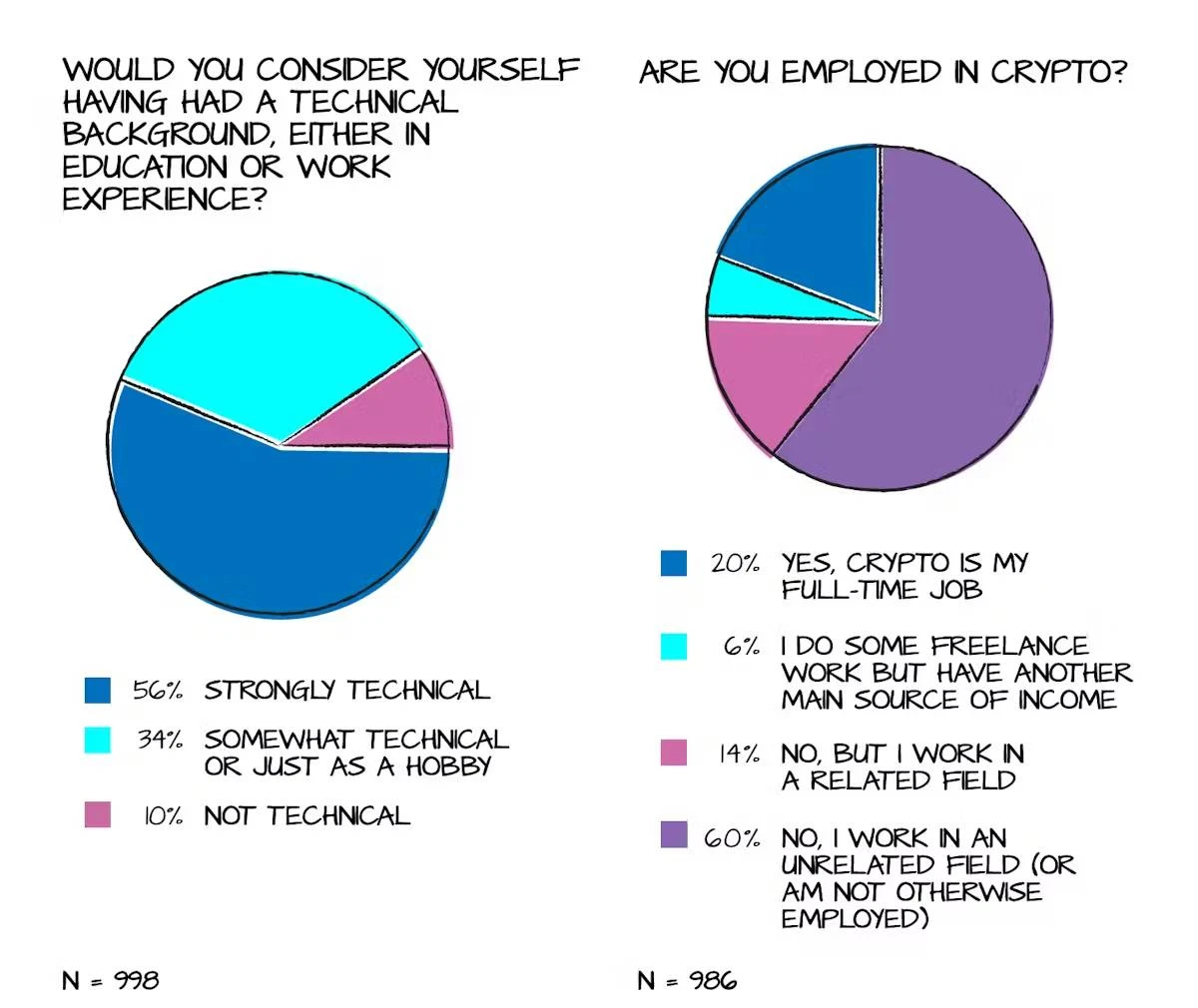
Figure 19: Technical background and employment industry
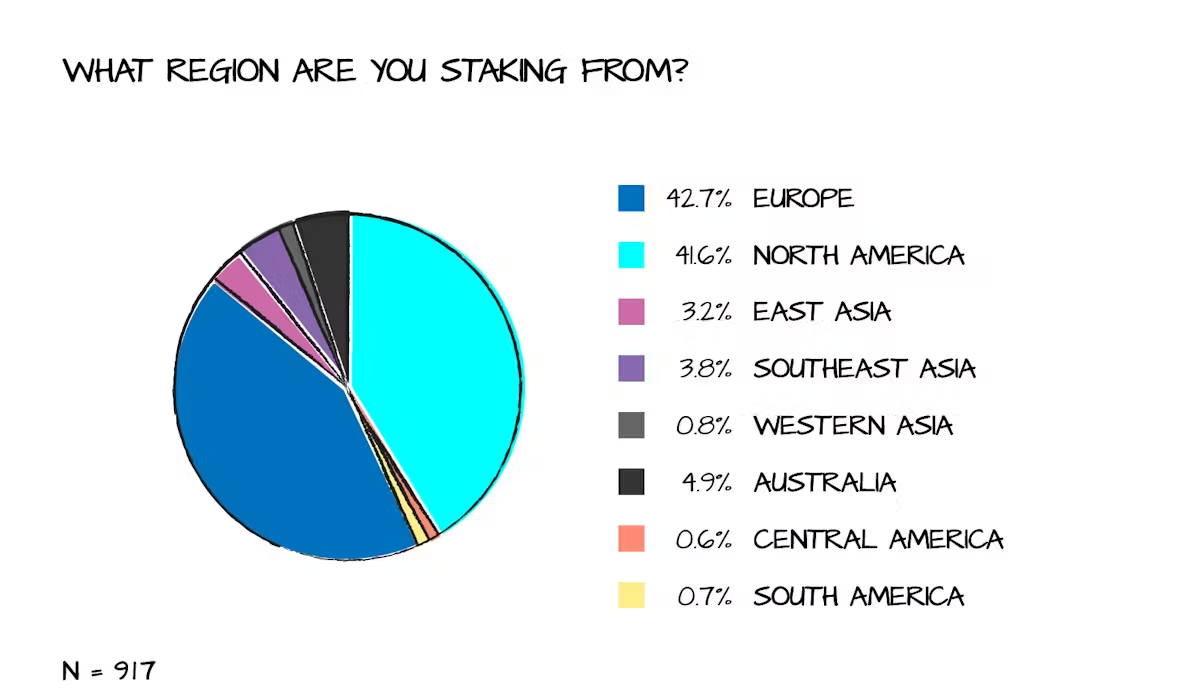
Figure 20: From which region are you staking?
discuss
Respondent Profile
Independent operators are mostly technical elites from North America, Europe, and Australia, using Linux operating systems, and these results are not surprising. Many diversity initiatives are taking place throughout the staking community. As for how, why, and what percentage of ETH these operators use to run validators, little is known, as stakers are often reluctant to share information that could lead to security vulnerabilities.
The large number of Genesis participants, 80% being Home Stakers, 84% not holding any significant amount of liquid staking tokens, and 77% having staked more than 66% of all ETH are very encouraging new data points, indicating a high level of confidence and resilience in staking among independent operators.
The proportion of independent operators
A recent report from StakeCat surveyed addresses identified as independent operators (methodology detailed here ) and determined that the percentage of independent operators on the network has increased since the merge. These survey data show that a significant portion of respondents (32%) have been staking since the Beacon Chain Genesis event. Since the survey data comes from a self-selected subset of stakers, these findings are likely biased towards stakers who joined around Genesis, when EthStaker was the only comprehensive source of staking education and support.
As more protocols and products that improve the user experience and provide their own support are introduced to independent operators, these later stakers may reduce their interaction with the general staking community. This is ideal because software, education, and support for independent operators is shifting towards diverse self-sustaining projects that may attract less “tech-savvy” operators.
Morale
Since the Shapella hard fork enabled withdrawals, ETH’s staking slope has continued to increase over time, and interest in using delegated staking by professional entities has also increased .
Figure 21: ETH staking over time: the slope increases significantly after Shapella
These specialized entities often benefit from economies of scale as they are able to run hundreds or thousands of validators per node, reducing hardware costs per ETH, whereas independent operators typically run single-digit or double-digit validators per node. Large entities can also pool execution layer rewards to smooth their validator sets, while independent operators have only recently launched two separate validator smoothing pools . Specialized operators can also earn additional benefits by participating in extra-protocol services that require more powerful hardware or operational expertise. These factors result in LST holders sometimes earning higher returns than independent operators, even after taking into account fees paid to staking service providers.
When considering these results, respondents experienced a sense of disenfranchisement. They now felt that their contribution to the network was just as valuable or more valuable than when they first became involved, but did not have the same feeling about how the protocol valued their participation. When asked how their interests were represented in protocol research, most respondents opinions fell somewhere between no representation and very good representation, with a slight lean toward the latter. More than half of respondents felt that researchers were either hostile, neglectful, or ineffective in representing their interests. Most respondents expressed support for changing the protocols reward structure to correct what they perceive as disenfranchisement (of course, this support does not necessarily imply endorsement of existing proposals).
The “stickiness” of independent operators
Over the years, independent operators have been called “irrational actors” and “altruists,” with some arguing that the stake they operate is more “sticky” than that of delegated stakers. This survey was not able to compare the two groups, but respondents did express a desire to continue staking regardless of small fluctuations in the APR or changes to the broader staking ecosystem.
While the majority of respondents expect to continue staking under any positive yield scenario, 21% said they have a specific yield threshold at which they would exit (n=184), with the average yield at that threshold being 2.3%*.
(* As a side note, this number should be understood as a departure from a rational desire to maintain high yields, as some stakers have indicated that they are currently running validators but would unstake at thresholds we have long passed, suggesting that some stakers may not be actively tracking their current actual yields).
This reluctance to unstake, combined with the ideological motivation for unstaking in the first place (supporting the Ethereum protocol), is often attributed to altruism on the part of independent operators. It is important to note that their inertia can be bidirectional. Independent operators are unlikely to unstake in response to small market or issuance fluctuations, but are equally unlikely to bring their stakes back to the network after unstaking, even if conditions become slightly favorable. As a result, their losses are likely to be more persistent than those of delegated stakes. Independent operators over-reliance on altruistic motivations rather than structural fairness is likely to eliminate this subset of stakers over time.
The series of airdrops to independent operators in 2023 and 2024 have recognized the current disparity in rewards and power between independent and professional operators, and the value of retaining independent operators in the network. These one-off incentives are helpful in the short term, but should not be relied upon to close this gap in the long term.
展望
StakeCats recent report shows that demand for Solo Staking is as strong as ever, with the ratio of independent operators to professional operators remaining relatively stable over time or even increasing. Given the centralizing pressures emerging from current protocol designs, many recent studies have attempted to retain meaningful participation from independent operators. These recommendations should rely heavily on insights gained directly from the motivations and concerns of independent operators – this survey and report aims to provide this data for brainstorming and research purposes.
This article is sourced from the internet: 2024 Ethereum Staker Report: What issues do independent stakers care about?
OpenAI今年新发布会带来的惊喜还未消退,英伟达在接连发布多款GPU后,股价再创新高,市值超越苹果,成为全球市值第二大公司,仅次于微软。如今,大模型驱动的AI已成为新时代的石油产业,我们正处于一个充满未知和可能性的早期阶段,正如石油产业的发展催生了现在的工业体系,大模型驱动的AI也有望迎来技术和商业的新时代。我相信AI是2024年各领域最热门的叙事,将带来连锁……







